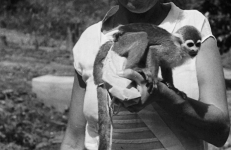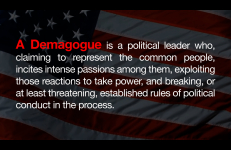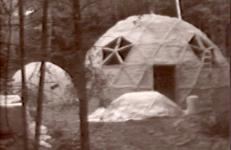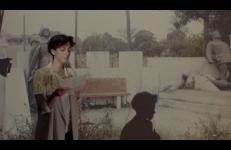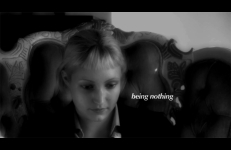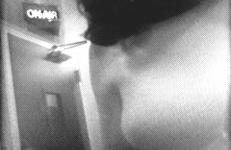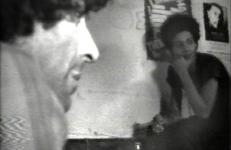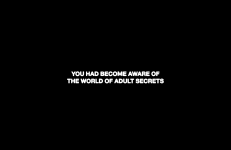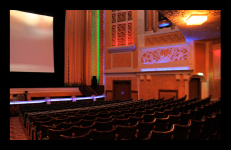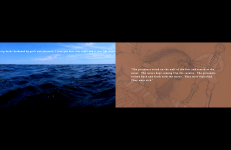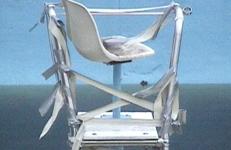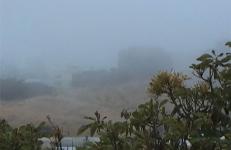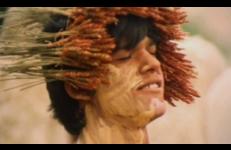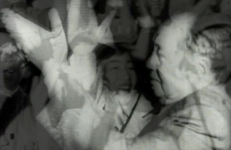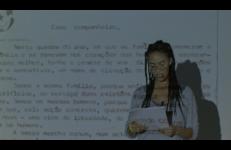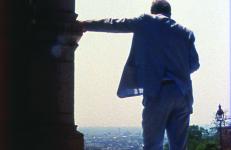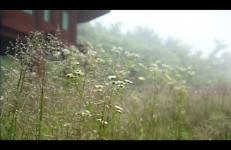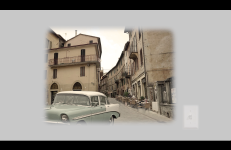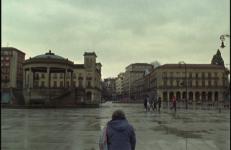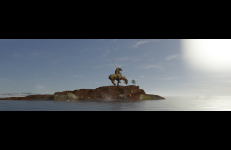In 1927 Henry Ford bought land in the Brazilian Amazon and called it Fordlandia. His plan to build a rubber plantation was part of an ambitious strategy to export mass production techniques and Midwestern Puritan ideologies to a foreign and diverse ecological system. While his enterprise failed, Fordlandia lay the groundwork for future environmental assaults on the rainforest.
History
This found-footage video looks at the demagogic aspirations of Huey Long, Father Charles Coughlin, Joseph McCarthy, and George Wallace, concluding with Donald Trump. American history is filled with such characters. In the past, they have all been defeated by stronger democratic forces that refused to acquiesce to authoritarianism. Today the future of this authoritarian urge as represented by Trump and the MAGA movement is uncertain.
A great example of early 1970s counter-cultural activity and the influence of Buckminster Fuller. The video, shot in Woodstock, NY in November 1971, includes footage of a communal meal being eaten in the woods, and of children playing in the mud. The video goes on to document the building of a geodesic dome. As the group works, many of them naked, they are interviewed to camera, and explain how to build a dome.
"A meditation on history, memory, and change in Central and Eastern Europe, Buried in Light is a non-narrative journey, a cinematic collage. Cohen’s “search for images” began at a time of extraordinary flux, as the Berlin Wall was dismantled—opening borders yet ushering in a nascent wave of consumer capitalism. What he saw struck him as a profound paradox: the moment Eastern Europe was revealed was simultaneously the moment it was hidden by the blinding light of commercialism.
Cacheu is a 10-minute shot of a lecture, performed by Joana Barrios, revolving around four colonial statues, which are stored today at the Fortress of Cacheu, one of the first bastions constructed by the Portuguese in 1588 in order to facilitate slave trade in the West African country of Guinea Bissau. Barrios evokes symbolic conflicts by tracing back different contexts in which the statues make an appearance: on a pedestal during Portuguese colonialism, dethroned and broken in pieces after Independence in the film Sans Soleil by Chris Marker, as background ghosts in Mortu Nega by Flora Gomes, and finally displayed at the Cacheu fort. The montage is a process that takes place before shooting, so that the image production is a result of a performative assemblage between text, acting, projected image and the framing of the camera by the director of photography, Matthias Biber.
CB is an experimental bio-pic: its heroine, Charlotte Brontë. A collaboration between Doug Ischar and Tom Daws, CB was commissioned by the Laumeier Museum, St. Louis, for their inaugural Nightlight series.
CB is an experimental bio-pic: its heroine, Charlotte Brontë. A collaboration between Doug Ischar and Tom Daws, CB was commissioned by the Laumeier Museum, St. Louis, for their inaugural Nightlight series.
The Videofreex had several experiences with the Black Panther Party, including interviewing Illinois Chapter Deputy Chairman Fred Hampton and New Haven Minister of Information Cappy Pinderhughes. In this tape, recorded on March 5th 1971, the Videofreex one-person camera crew Bart Friedman is walking the hallways of CBS, trying to find out where a video statement by Black Panther Eldridge Cleaver is located. The shots are mostly close up on people’s torsos and there is some image loss, but the sound is intact. The tape has an eerie espionage feel.
Shot in October 1969, this tape gives an inside view of the workings of late-sixties radical groups and the debates going on within their ranks. At a meeting of Yippies, there is a discussion about the nuts and bolts of fundraising through benefit concerts and events in an attempt to finance support efforts related to the Chicago 8 Conspiracy Trial.
A Child Already Knows is a short film that describes a child’s retelling of an escape from Shanghai disguised as a family vacation through the south. Half-remembered scenes of a historical cusp are recalled alongside a montage of appropriated early Mao-era children’s animations of the same era. The work assembles fragmentary memories and images that must be conjured through the mind, in lieu of historical reenactments too costly to make and made impossible in a place of no return.
Each film in this series is a condensed experience of a feature film, a single 360-degree time lapsed shot in an empty cinema where the sound becomes a cacophony of past projections and the aural experience is closer to that of the projectionist than the audience.
Cloudless Blue Egress of Summer is a two-channel synchronized video installation. A composite of the two channels presented side by side in one video is available from Video Data Bank for educational use only.
With Cold Harbor, Donigan Cumming uses a minimum of elements to create a powerful anti-war message. Initially, the video seems enigmatic, almost abstract. An amateur Handycam moves tentatively around a hospital room, panning and zooming from the view out the window to the dark-skinned old man lying on the bed. The image is shaky, blurred, often out of focus. Off-screen, a radio or television blares the news.
A poetic meditation on distance, Come Closer is a short and peripatetic film, casting an affective web between the locations of Lisbon, San Francisco and Brazil. Focusing on Brazilian-Algerian filmmaker Karim Aïnouz, musician Derrick Green –– the filmmaker’s brother and lead singer of Brazilian band Sepultura –– and her own work produced in Lisbon since 1992, Come Closer can be thought as a meditation on friendship and saudade.
come lontano is a perverse historical romance in which two lives are exposed, inter-mixed, doused with sentiment, and — hopefully — redeemed. The work revolves around a central ‘couple’ — Pier Paolo Pasolini and Maria Callas. There is a third main character, an ambiguous villain made of steel, glass and rubber. Each member of our central couple has her/his own external distractions which impinge — to varying degrees — on their brief, ecstatic encounter. This encounter was in fact a cinematic collaboration; it’s product the film Medea (1969).
Communists Like Us is an ambient music video made from a few seconds of archival footage of Mao Zedong applauding and members of the Red Guard chanting. The title Communists Like Us was taken from the 1985 text of the same name written by Felix Guattari and Toni Negri.
Staged at the Haus der Kulturen der Welt, Berlin, Conakry is a sequence shot on 16mm film that travels through time, space and media to revisit one film reel from the Guinean archive. This particular reel documents an exhibition curated by Amílcar Cabral at the Palais du Peuple in 1972 in Conakry, Guinea, reporting on the state of the war against Portuguese rule. César invited the Portuguese writer Grada Kilomba and the American radio activist Diana McCarty to reflect on these images and their history.
The fragment contains within it an implied reference to something that was once whole. It suggests damage and violence, time and distance. These qualities I found were integral to my own constitution, and it was with the making of Cooperation Of Parts that this became clear.
“Misfortune makes and breaks you.” I have the misfortune of a history of disruptions, and the fortune of having that history to work with.
In 1993 President Mitterrand visited Korea. On this visit Mitterrand promised that he would restore to Korea the 297 volumes of the Oe-Kyujanggak Archives (the royal protocols of Chosun Dynasty in Korea), pillaged by the French army in 1866 and now part of the collections in the Bibliothèque Nationale de France (National Library of France). As a sign of intent, he assured the interested parties that a two-volume book, the Hyikyungwon-Wonsodogam-Uigwe, would be immediately returned.
History haunts the border town of Columbus, New Mexico when riders on horseback cross the border to commemorate Pancho Villa's 1916 raid.
A portrait of Luce Vigo, film critic, educator, and the daughter of pivotal French filmmaker Jean Vigo. Commissioned by the Spanish documentary festival, Punto de Vista, the film incorporates Luce's memories of her extraordinary life, reflections on her father, and images of Northern Spain.
Culture Capture: Crimes Against Reality extends NRO’s Culture Capture series towards examining desires for monumentality and its dissolution, pursuing fantasies of removal by morphing monuments into metastasizing flesh via ritualized photogrammetric capture and virtual manipulation, performing a sort of sympathetic magic to clear space for Indigenous futures.
Half tongue-in-cheek absurdism and half deadly earnest, Culture Capture: Terminal Adddition continues New Red Order’s ongoing project of “culture capture,” recruiting viewers to participate in a program of practical strategies to counter the “salvage mindset,” which sets aside Indigenous culture and sovereignty by consigning it to the past.
Half tongue-in-cheek absurdism and half deadly earnest, Culture Capture: Terminal Adddition continues New Red Order’s ongoing project of “culture capture,” recruiting viewers to participate in a program of practical strategies to counter the “salvage mindset,” which sets aside Indigenous culture and sovereignty by consigning it to the past.




